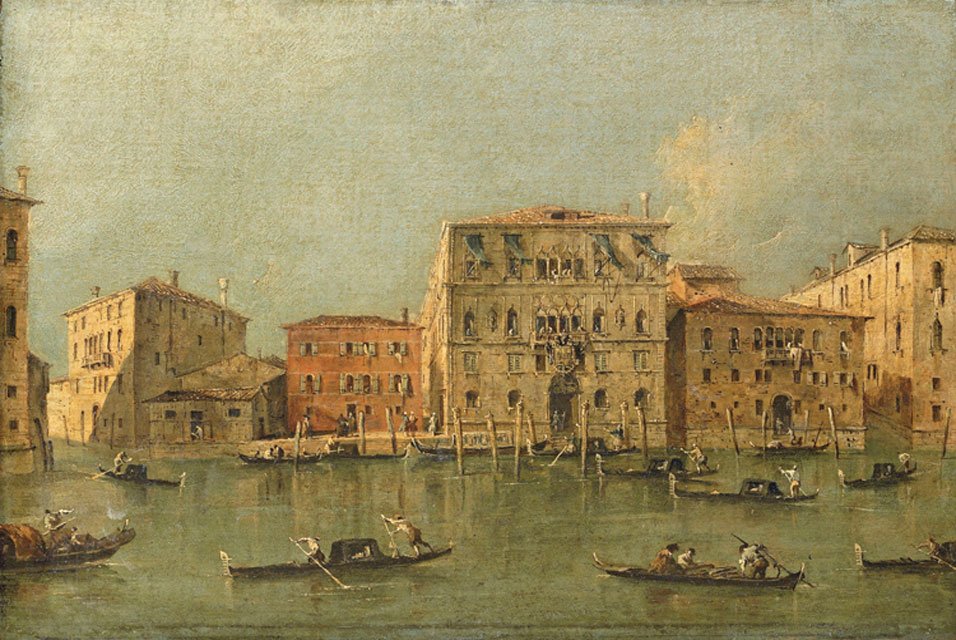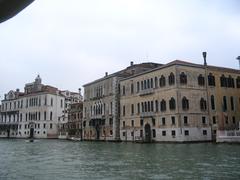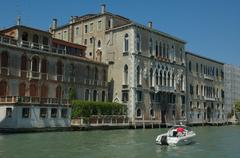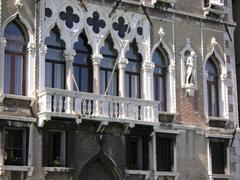
Palazzo Loredan dell’Ambasciatore Venice: Visiting Hours, Tickets, and Travel Guide
Date: 15/06/2025
Introduction
Palazzo Loredan dell’Ambasciatore is an outstanding example of Venetian Gothic architecture, set majestically along the Grand Canal in the Dorsoduro district. Commissioned by the influential Loredan family in the late 15th century, the palace has served as a noble residence, a center of European diplomacy, and a symbol of Venice’s cultural and political legacy. Its name, meaning “of the Ambassador,” reflects its historic role as the residence of Austrian ambassadors in the 18th and 19th centuries (Venipedia; Wanderlog). Today, while the palace is primarily a private residence, its façade remains a highlight among Venice’s architectural jewels, and special openings offer rare opportunities to explore its storied interiors.
This comprehensive guide provides a detailed overview of the palazzo’s history, architecture, and practical visitor information, including up-to-date details about viewing, ticketing, accessibility, and tips for making the most of your Venice itinerary.
Table of Contents
- Historical Overview
- Architectural Features
- Visiting Information
- Nearby Attractions
- Visitor Tips
- Frequently Asked Questions (FAQ)
- Visuals and Media
- Context: Jubilee Year 2025
- References
Historical Overview
Origins and the Loredan Family
Palazzo Loredan dell’Ambasciatore was commissioned in the late 1400s by the Loredan family, one of Venice’s most powerful patrician dynasties. The Loredans produced several doges, including Leonardo Loredan (Doge 1501–1521), and contributed significantly to Venetian political, military, and cultural life (Treccani). The palace’s construction symbolized both their personal prestige and their role as influential figures within the Venetian Republic.
Diplomatic Legacy
The title “dell’Ambasciatore” was adopted in the mid-18th century when Doge Francesco Loredan assigned the palace as the official residence of the Austrian ambassador to Venice. This marked the building as a focal point of international diplomacy and social life, hosting significant receptions, negotiations, and cultural events (Venice and Its Lagoon).
Artistic and Social Significance
The palace has been home to notable residents, including Marshal Matthias von der Schulenburg, a renowned military leader and art patron. Throughout history, it was a vibrant cultural salon, hosting literary, musical, and artistic gatherings that reflected Venice’s cosmopolitan spirit (ViewsonVenice).
Architectural Features
Exterior and Façade
Palazzo Loredan dell’Ambasciatore is a quintessential example of Venetian “gotico fiorito” (flamboyant Gothic), with later Renaissance and Rococo enhancements. Its façade, facing the Grand Canal, is characterized by:
- Symmetrical Layout: Three main levels, with a pointed ogival water portal and flanking windows at ground level.
- Piano Nobile: A grand loggia with a central quadrifora (four-light window), pointed arches, slender columns, and ornate tracery inspired by the Doge’s Palace and Ca’ d’Oro. Heraldic bas-reliefs and family crests further highlight the Loredan lineage (Ermak Vagus; Venice architecture - palaces).
- Upper Floors: Quadrifora motifs are repeated, with simpler decoration and additional single-lancet windows.
- Materials: The use of Istrian stone and polychrome ornamentation reflects Venice’s trade connections and artistic heritage.
Interior and Garden
While generally private, historical records reveal:
- Grand Staircases and Salons: Featuring original stucco, frescoes, and period furnishings.
- Traditional Layout: A portego (central hall) extends from the canal entrance to a rare private garden at the rear.
- Garden: One of the few Grand Canal palaces with a green space, offering tranquility and insight into Venetian noble life (Venice Gardens Foundation).
Restoration
The palace has undergone several restorations, especially after fires in the 18th and 19th centuries. The Gaggia family currently maintains its architectural integrity, balancing preservation with selective luxury rentals (Articles Factory).
Visiting Information
Current Access
Palazzo Loredan dell’Ambasciatore remains a private residence and is not regularly open to the public. However, it occasionally hosts special events, exhibitions, and private tours during cultural festivals or by special arrangement.
- Façade Viewing: No ticket is required to admire the palace’s exterior from the Grand Canal via vaporetto (water bus) or from the Ponte dell’Accademia.
- Special Openings: For updates on rare public access, guided tours, or event openings, check the official Venice tourism portal and local cultural calendars.
Location and Getting There
- District: Dorsoduro, between Palazzo Moro and Casa Mainella.
- Nearest Vaporetto Stops: Ca’ Rezzonico and Accademia.
- Accessibility: The surrounding area is accessible via public transportation; the nearby Ponte dell’Accademia features ramps for improved accessibility.
Ticketing
- Standard Tickets: Not applicable for general visits, as the palace is not a public museum.
- Event Tickets: When available, tickets for events or private tours are typically bookable online or through official tour agencies. Advance booking is necessary during peak seasons and special events.
Nearby Attractions
Dorsoduro is rich in cultural sites. Combine your visit with:
- Gallerie dell’Accademia: Venice’s leading art museum, a short walk from the palace.
- Peggy Guggenheim Collection: Modern art housed in another Grand Canal palace.
- Ca’ Rezzonico: Museum of 18th-century Venice.
- Ponte dell’Accademia: Offers excellent views and photographic opportunities of the palazzo’s façade.
Visitor Tips
- Photography: Exterior photography is permitted and best during morning or late afternoon light. Interior photography during special events depends on the organizer—confirm in advance.
- Private Tours: For a deeper experience, arrange a private tour through reputable Venetian heritage agencies.
- Cultural Events: Monitor Venice’s event calendar and the palace’s official channels for opportunities to access the interiors during concerts, exhibitions, or the Venice Biennale.
- Accessibility: Contact event organizers ahead for accessibility details due to the historic nature of the building.
- Respect Privacy: As a private residence, respect restricted areas and private functions.
Frequently Asked Questions (FAQ)
Q: Is Palazzo Loredan dell’Ambasciatore open for public tours?
A: No, it is not open for regular public tours, but may be accessible during special events or by private arrangement.
Q: How can I view the palace’s façade?
A: From the vaporetto on the Grand Canal, the opposite bank near Ponte dell’Accademia, or by walking along the canal in Dorsoduro.
Q: Are tickets required to visit?
A: No tickets are needed to view the exterior. Event or tour tickets may be required for interior access during special openings.
Q: Is the palace wheelchair accessible?
A: Accessibility is limited due to the historic architecture. Exterior viewing and nearby bridges offer reasonable access; check event details for interior accommodations.
Q: What are the best times for photography?
A: Early morning or late afternoon provide the best natural light for photographing the façade.
Visuals and Media
Context: Jubilee Year 2025
With the 2025 Jubilee Year anticipated to increase tourism across Italy, including Venice, visitors should plan ahead:
- Book accommodations and event tickets early.
- Expect larger crowds at major sites and on the Grand Canal.
- Use mobile apps and official tourism resources for real-time updates (TravelAwaits).
References
- Venipedia, Palazzo Loredan dell’Ambasciatore
- Venice Civic Museums
- Venice and Its Lagoon
- Treccani, Leonardo Loredan
- Grand Canal Venice
- Venice Gardens Foundation
- Trek Zone, Palazzo Loredan dell’Ambasciatore Overview
- Articles Factory, Travel Article
- Wikipedia, Palazzo Loredan dell’Ambasciatore
- Ermak Vagus, Venice Architecture
- Wanderlog, Palazzo Loredan dell’Ambasciatore
- Venice architecture - palaces
- TravelAwaits, Jubilee Italy 2025
- Venice tourism portal















































































































